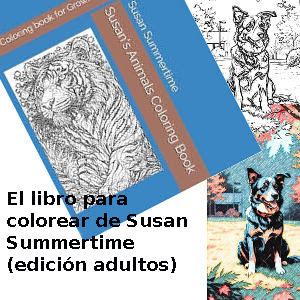Note : the equivalence of gelatin in sheets and gelatin in powder is just given in metric system.
The term 'panna cotta' means cooked cream in Italian. It comes from Piedmont and is very popular because it is a very simple dessert, as well as tasty and cheap. To cook it we will need gelatin.
Gelatin is protein in its purest form with the almost testimonial presence of water and mineral salts. It does not contain fat, it has no flavor and it is completely assimilated by the human body - unlike fiber, for example -.
Gelatin is used as a thickener, binder and gelling agent. To gel means that the addition of gelatin to a liquid medium tends to convert said medium into gelatin, which is an intermediate stage between liquid and solid. This allows us to enjoy liquid cream, as in the case of panna cotta, as if it were a flan.
Gelatin is generally obtained from the connective tissue of cattle or pigs, although poultry and fish are also used. Gelatin is sold in transparent sheets or in granular compounds. In the recipes you can find that they give you the amount of gelatin to use as leaves or in grams. If they give you in grams and you have or can get only sheets, it is convenient to know that each sheet is equivalent to 1.5 grams, approximately. Gelatin can only be used in warm or cold foods. If it comes into contact with mixtures that are too hot, it loses its gelling power.
It also has problems with the acid in some fruits (especially pineapple and kiwi). There are other thickeners or gelling agents that complement the action of gelatins of animal origin where they do not work well. Currently, agar-agar, which has its origin in a seaweed, is widely used in haute cuisine.
Whatever the use that is going to be given to the gelatin sheets, it is essential that before use it is immersed in cold water for at least 5 minutes. This process will soften it and simply draining it completely we can use it. There is also instant gelatin powder soluble in cold water.
INGREDIENTS
• Half a liter (5 cups) of liquid cream for cooking or whipping
• A quarter of a liter (1 cup and a quarter) of milk
• 125 grams (4.4 oz) of sugar
• 6 sheets of gelatin (9 grams of powdered gelatin)
• Cinnamon stick (optional)
First, we mix the liquid cream, the milk and the sugar in a saucepan that we heat without letting it boil. If we like the taste of cinnamon, we can heat the liquids with a cinnamon stick and even with a little lemon peel. Stir continuously to prevent the sugar from sticking. When it is about to boil, remove and reserve. It is important that it does not boil or the cream could curdle.
While we heat the milk, soak the gelatin in cold water in a deep soup plate.
When the mixture of milk and cream is lukewarm, add the gelatin and stir well until it dissolves. From here we have two options: fill individual molds or fill a long mold and cut portions as we need. Gelatin lends itself quite well to the latter, since the consistency of panna cotta is greater than that of flan.
Let it cool at room temperature.
We put the mold in the fridge and the next day (8 hours) it will be ready to be consumed.
The pannacotta admits many variations such as adding a liqueur to the mix, serving with liquid chocolate or jam, decorating with berries or including them in the mix, etc.


